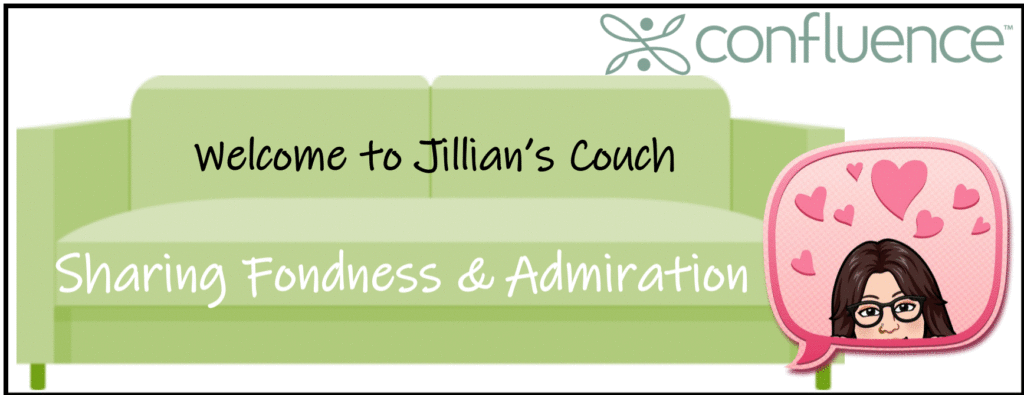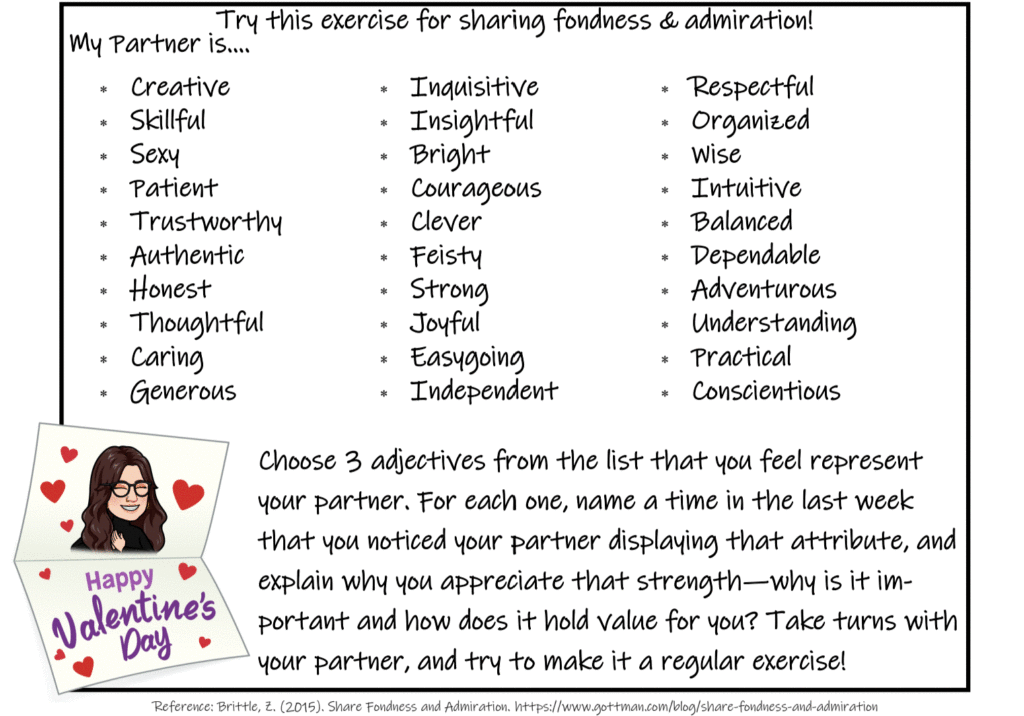
What better way to celebrate Valentine’s Day than to reaffirm to our partner how much we love them. Even better—tell them exactly what we love so much about them!

Sharing fondness and admiration is essential to building positivity and friendship in relationships. This practice is also the antidote to one of the four horsemen: contempt. At the beginning of a relationship, it is easy to get caught up in the newness of everything and it can seem like everything about our partner is perfect and exciting. This phase is called “Limerence” and typically lasts for the first 2 years of a relationship. Coincidentally, those first 2 years are when couples usually decide to commit, move in together, and marry. Therefore, the hard work of a relationship occurs outside of the cushion of the Limerence phase.
The differences and quirks of our partner are more noticeable after this stage, and often we think the differences are the reason the relationship doesn’t work. A positive approach to differences can reassure us that differences do not have to be obstacles, but opportunities for growth in our relationship. Sharing fondness for our partner means telling them specifically why we are proud of them, impressed by them, or attracted to them. Creating this habit helps us leverage and appreciate differences.
Regularly expressing love and appreciation is not just a habit, but a powerful tool that fosters a deep emotional bond, promoting a stronger connection between partners. In addition, consistent communication of what you love about your partner counteracts negative interactions, reducing conflicts’ overall impact. Not only does this communication habit enhance relationship satisfaction, but it also boosts each partner’s self-esteem and general happiness. Sharing fondness and admiration creates a stronger foundation for difficult times and a reservoir of positive memories and feelings to draw upon.
So how do we do this? By practicing daily gratitude and noticing seemingly “small” things our partner does i.e. “Thanks so much for taking out the trash!”, giving genuine compliments, being consistent in rituals of connection (weekly date nights or nightly check-ins), focusing on our partner’s strengths (notice what they are doing right more than what they’re doing wrong) and utilizing our body language, facial expressions and tone of voice to effectively communicate fondness and admiration.

Jillian Thony, MAMFT
Marriage and Family Therapist
akconfluence.com
Call/text 907. 313.4433


